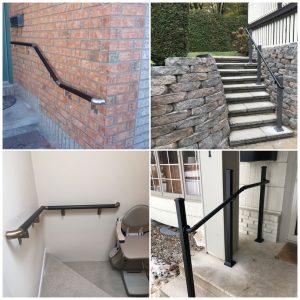Implementing Custom Handrails To Meet The User’s Requirements
 If you are getting your house ready for a loved one to move in or modifying their home so they can age-in-place, you’ll want to consider the specific modifications needed to accommodate mobility issues.
If you are getting your house ready for a loved one to move in or modifying their home so they can age-in-place, you’ll want to consider the specific modifications needed to accommodate mobility issues.
Common mobility issues can include difficulty walking, limited vision, loss of strength, and other areas that require you to make the home safe and accessible. Location and placement are key to making sure they meet the needs of the user to keep them safe and independent. Common places to add custom handrails : stairs, ramps, porches, decks, balconies, walkways, or hallways. Below are tips to make sure your or your loved ones’ home meets general accessibility standards.
- The railing should be continuous and smooth to maintain a consistent grip on it and easily run their hand along it if needed.
- A railing is usually most helpful to be on both sides of the stairway, ramp, etc
- The railing should be 34-38 inches high. This height ensures that most people can comfortably use the handrail. If the principal users of the handrail are children, however, the handrail should be no more than 28 inches from the ground.
- The clearance between the handrail and the wall (or any other obstruction) should be 1.5 inches or more. This allows users’ hands to fully grip the handrail without being impeded by the wall or other obstructions.
- The end of the handrail should be either be rounded or return smoothly into the floor, wall, or a post. This prevents any sort of protruding edge at the end of the railing, which someone might unintentionally bump into.

I found it helpful when you said to add custom handrails around stairs, decks, and porches for easier accessibility. My uncle is wanting a steadier handrail installed for his new stairs under his deck. I’ll have to help him find some high-quality hand railings that will also look good in a darker setting.